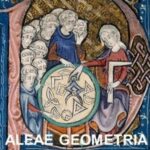Keynote speakers
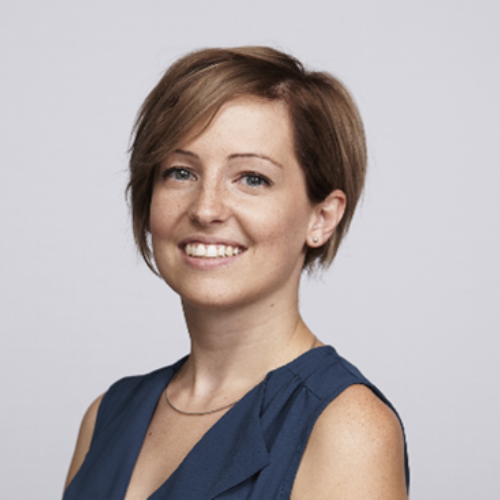
Prof. Nina MIOLANE
Assistant Professor, AI, UC Santa Barbara. Co-Director, AI Center, Bowers Women's Brain Health Initiative. Affiliate, Stanford SLAC
Topological Deep Learning: Unlocking the Structure of Relational Systems
The natural world is full of complex systems characterized by intricate relations between their components: from social interactions between individuals in a social network to electrostatic interactions between atoms in a protein. Topological Deep Learning (TDL) provides a framework to process and extract knowledge from data associated with these systems, such as predicting the social community to which an individual belongs or predicting whether a protein can be a reasonable target for drug development. By extending beyond traditional graph-based methods, TDL incorporates higher-order relational structures, providing a new lens to tackle challenges in applied sciences and beyond. This talk will introduce the core principles of TDL and provide a comprehensive review of its rapidly growing literature, with a particular focus on neural network architectures and their performance across various domains. I will present open-source implementations that make TDL methods more accessible and practical for real-world applications. All in all, this talk will showcase how TDL models can effectively capture and reason about the complexity of real-world systems, while highlighting the remaining challenges and exciting opportunities for future advancements in the field.
Bibliography
- Hajij, M., Papillon, M., Frantzen, F., Agerberg, J., AlJabea, I., Ballester, R., … & Miolane, N. (2024). TopoX: a suite of Python packages for machine learning on topological domains. Journal of Machine Learning Research, 25(374), 1-8.
- Papamarkou, T., Birdal, T., Bronstein, M. M., Carlsson, G. E., Curry, J., Gao, Y., … & Zamzmi, G. (2024). Position: Topological Deep Learning is the New Frontier for Relational Learning. In Forty-first International Conference on Machine Learning.
- Papillon, M., Bernárdez, G., Battiloro, C., & Miolane, N. (2025). TopoTune: A framework for generalized combinatorial complex neural networks. Proceedings of the Forty-second International Conference on Machine Learning.
- Papillon, M., Sanborn, S., Hajij, M., & Miolane, N. (2023). Architectures of Topological Deep Learning: A Survey of Message-Passing Topological Neural Networks. arXiv preprint arXiv:2304.10031.
- Hajij, M., Zamzmi, G., Papamarkou, T., Miolane, N., Guzmán-Sáenz, A., Ramamurthy, K. N., … & Schaub, M. T. (2022). Topological deep learning: Going beyond graph data. arXiv preprint arXiv:2206.00606.
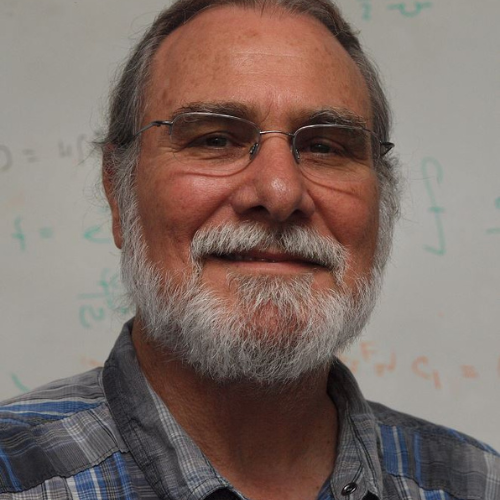
Philip J. MORRISON
The University of Texas at Austin , Physics Department
Metriplectic Dynamics: A Geometrical Framework for Thermodynamically Consistent Dynamical Systems
Classical descriptions of matter present many fluid mechanical and kinetic theory dynamical systems. These include, e.g., the Navier-Stokes-Fourier system, the Cahn-Hilliard-Navier-Stokes system for multiphase fluid flow, and various types of collisional kinetic theories for gaseous and plasma modeling. A desirable feature of such modeling is thermodynamic consistency, i.e., conservation of energy and production of entropy, in agreement with the first and second laws of thermodynamics. Metriplectic dynamics is a kind of dynamical system (finite or infinite) that encapsulates in a geometrical formalism such thermodynamic consistency. An algorithmic procedure for building such theories is based on the metriplectic 4-bracket, a bracket akin to the Poisson bracket that maps phase space functions to another. However, the 4-bracket maps 4 such functions and has algebraic curvature symmetries. Metriplectic 4-brackets can be constructed using the Kulkarni-Nomizu product or via a pure Lie algebraic formalism based on the Koszul connection. The formalism algorithmically produces many known and new dynamical systems, and it provides a pathway for constructing structure preserving numerical algorithms.
Bibliography:
- P. J. Morrison and M. Updike, « Inclusive Curvature-Like Framework for Describing Dissipation: Metriplectic 4-Bracket Dynamics,” Physical Review E 109, 045202 (22pp) (2024).
- A. Zaidni, P. J. Morrison, and S. Benjelloun,, « Thermodynamically Consistent Cahn-Hilliard-Navier-Stokes Equations using the Metriplectic Dynamics Formalism,” Physica D 468, 134303 (11pp) (2024).
- N. Sato and P. J. Morrison, « A Collision Operator for Describing Dissipation in Noncanonical Phase Space,”Fundamental Plasma Physics 10, 100054 (18pp) (2024)
- W. Barham, P. J. Morrison, A. Zaidni, « A thermodynamically consistent discretization of 1D thermal-fluid models using their metriplectic 4-bracket structure, » arXiv:2410.11045v2 [physics.comp-ph] 19 Oct 2024.
- A. Zaidni, P. J. Morrison, « Metriplectic 4-bracket algorithm for constructing thermodynamically consistent dynamical systems, » arXiv:2501.00159v1 [physics.flu-dyn] 30 Dec 2024.

Mário A.T. FIGUEIREDO
Instituto de Telecomunicações and Instituto Superior Técnico Universidade de Lisboa, Portugal
Extended Variational Learning via Fenchel-Young Losses
Many statistical learning and inference methods, from Bayesian inference to empirical risk minimization, can be unified through a variational perspective that balances empirical risk and prior knowledge. We introduce a new, general class of variational methods based on Fenchel-Young (FY) losses. These losses, derived using Fenchel conjugation (a central tool of convex analysis), generalize the Kullback-Leibler divergence and encompass Bayesian as well as classical variational learning. This FY framework provides generalized notions of free energy, evidence, evidence lower bound, and posterior, while still enabling standard optimization techniques like alternating minimization and gradient backpropagation. This allows learning a broader class of models than previous variational formulations. This talk will review FY losses and then detail this new generalized variational inference approach to machine learning.
Bibliography:
- Blondel, A. Martins, V. Niculae, « Learning with Fenchel-Young losses », Journal of Machine Learning Research, vol. 21, pp. 1532-4435, 2020.
- Martins, M. Treviso, A. Farinhas, P. Aguiar, M. Figueiredo, M. Blondel, V. Niculae, « Sparse continuous distributions and Fenchel-Young losses », Journal of Machine Learning Research, vol. 23, pp. 1−74, 2022.
- A. Martins, A. Farinhas, M. Treviso, V. Niculae, P. Aguiar, M. Figueiredo, « Sparse and Continuous Attention Mechanisms », Neural Information Processing Systems (NeurIPS), 2020
- Sklaviadis, S. Agrawal, A. Farinhas, A. Martins, M. Figueiredo, « Fenchel-Young Variational Learning », arXiv:2502.10295, 2025.
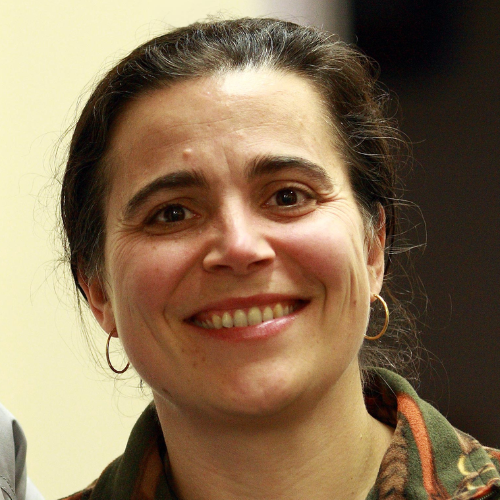
Rita FIORESI
FaBiT, University of Bologna, Italy
A Noncommutative perspective of Graph Neural Networks
In this talk we show how the merging of different languages pertaining to K-theory, algebraic geometry, noncommutative geometry and gauge field theory can be fruitfully integrated to give a unified version of discrete differential geometry on graphs.
Bibliography:
- E. J. Beggs, S. Majid, Quantum Riemannian Geometry, Springer, 2020.
- Bodnar, C., Di Giovanni, F., Chamberlain, B. P., Lio, P., et Bronstein, M. M., Neural Sheaf Diffusion: A Topological Perspective on Heterophily and Oversmoothing in GNNs, ICLR 2022.
- M. Bronstein, J. Bruna, T. Cohen, et P. Veličković, Geometric Deep Learning: Grids, Groups, Graphs, Geodesics, and Gauges, ArXiv:2104.13478, 2021.
- Theo Braune, Yiying Tong, François Gay-Balmaz, Mathieu Desbrun, A Discrete Exterior Calculus of Bundle-valued Forms, arXiv:2406.05383.
- Curry, J. M., Sheaves, Cosheaves and Applications, 2014.
- A. Dimakis, Folkert Mueller-Hoissen, Discrete Differential Calculus: Graphs, Topologies and Gauge Theory, J. Math. Phys. 35 (1994), 6703-6735.
- R. Fioresi, A. Simonetti, F. Zanchetta, Sheaves on Graphs and Their Differential Calculus, preprint 2025.
- J. Friedman, Cohomology in Grothendieck Topologies and Lower Bounds in Boolean Complexity, arXiv:cs/0512008, 2006.
- Hansen, J., Ghrist, R., Toward a Spectral Theory of Cellular Sheaves, J. Appl. and Comput. Topology 3, 315–358 (2019).
- J. Kolar, P. Michor, J. Slovak, Natural Operations in Differential Geometry, GTM, Springer Verlag, 1993.
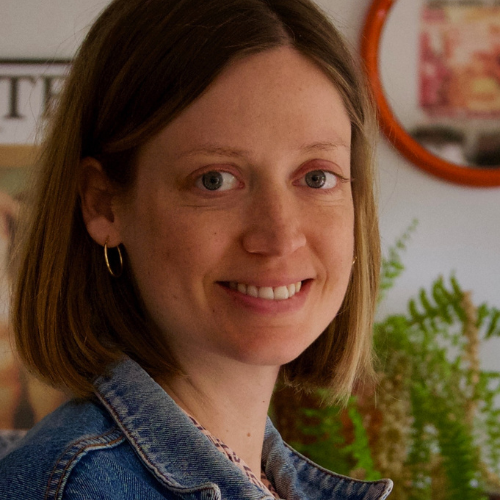
Alice Le Brigant
Université Paris 1 Panthéon-Sorbonne
The L^p Fisher-Rao metrics and the alpha-connections
The information geometry of parametric statistical models is built around two central constructions: the Fisher-Rao metric and the family of dual $\alpha$-connections. Both have non-parametric counterparts, which we discuss in this talk. We introduce the $L^p$-Fisher-Rao metrics, a family of Finsler metrics that generalize the Fisher-Rao metric, and study their links with the $\alpha$-connections. We show that their geodesics coincide on the space of smooth densities, for $p=2/(1-\alpha)$, while they differ on the space of probability densities. This gives a new variational interpretation of $\alpha$-geodesics as being energy minimizing curves. Joint work with Martin Bauer, Yuxiu Lu and Cy Maor.
Bibliography:
- M. Bauer, A. Le Brigant, Y. Lu and C. Maor. « The Lp-Fisher–Rao metric and Amari-Cencov α-Connections. » Calculus of Variations and Partial Differential Equations 63.2 (2024): 56.

Frédéric Barbaresco
THALES, Campus de Paris-Saclay, Palaiseau, France
Bicentenary of Thermodynamics and Sadi Carnot’s Seminal Work: From Constantin Carathéodory’s Contact Geometry Model to Jean-Marie Souriau’s Symplectic Foliation Structure
Sadi Carnot stands as a symbol of the “Ingénieur-Savant” who have profoundly enriched the fertile ground of French innovation. The discipline of thermodynamics, which he founded, today underpins information theory, the development of future quantum computers, and artificial intelligence, as well as climate science, pillars upon which rest both our industrial policies and the future of our societies. Sadi Carnot formulated the second law of thermodynamics in his treatise, “Reflections on the Motive Power of Fire “(1824), that initially received little attention, but emerged from obscurity years later thanks to the works of Émile Clapeyron, William Thomson (later Lord Kelvin), and Rudolf Clausius. Sadi Carnot drew upon a remarkably wide range of knowledge, nourished by an eclectic and inquisitive mind. Taken by illness only a few years after publishing his Reflections, he remains forever preserved in the brilliance of his genius. The explanation of thermodynamics through geometric models was initiated by seminal figures such as Gibbs, Reeb, Carathéodory and Souriau. We shall trace the narrative of the geometric models, from Carathéodory (1909) to Souriau (1969), that have sought to re-establish Sadi Carnot’s thermodynamics upon new foundational variational principles. As observed by Vladimir Arnold, “Every mathematician knows it is impossible to understand an elementary course in thermodynamics. The reason is that thermodynamics is based, as Gibbs has explicitly proclaimed, on a rather complicated mathematical theory, on the contact geometry ». A seminal contribution of Carathéodory lies in the introduction of a differential equation that governs the infinitesimal changes in state functions as the system undergoes infinitesimal transitions between states. This equation is of paramount importance as it embodies the first and second laws of thermodynamics in a single, unified mathematical expression. Carathéodory’s axiomatization is intricately linked with the language of differential geometry, later interpretated as contact geometry and has greatly influenced Misha Gromov geometer who introduced the concept of Carnot-Carathéodory spaces. One of the pivotal results of Carathéodory’s axiomatization is his theorem, which asserts that, given certain conditions the second law of thermodynamics, as formulated by Clausius, can be derived directly from the fundamental thermodynamic relation. While Carnot thermodynamics was primarily concerned with systems in equilibrium, Carathéodory’s axiomatization extends far beyond this, offering a more general framework that accommodates systems in non-equilibrium states. Only recently, however, has the Souriau’s Symplectic Foliation Model, introduced within the domain of geometric statistical mechanics, provided a geometric definition of entropy as an invariant Casimir function on symplectic leaves, specifically, the coadjoint orbits of the Lie group acting on the system, where these orbits are interpreted as level sets of entropy. We present a symplectic foliation interpretation of thermodynamics, based on Jean-Marie Souriau’s Lie Groups Thermodynamics. This model offers a Lie algebra cohomological characterisation of entropy, viewed as an invariant Casimir function in the coadjoint representation.
Tributes from historians, scientists and industrialists to Sadi Carnot:
– Jean Dhombres: https://www.youtube.com/watch?v=nI-2c9gvazw
– Alexandre Moatti: https://www.youtube.com/watch?v=ntR9sSIz2yk
– Christophe Goupil: https://www.youtube.com/watch?v=wwB9KYnTSuA
– Frédéric Barbaresco: https://www.youtube.com/watch?v=G_zlWeEyXjo
Bibliography:
- Carnot Sadi (1824) Réflexions sur la Puissance Motrice du Feu et sur les Machines propres à développer cette Puissance, Bachelier, Paris.
- Carathéodory Constantin (1909) Untersuchungen über die Grundlagen der Thermodynamik. Mathematische Annalen 67:355–386.
- Massieu François (1869) Sur les Fonctions caractéristiques des divers fluides. Comptes Rendus de l’Académie des Sciences Paris 69:858–862.
- Souriau Jean-Marie (1974) Mécanique statistique, groupes de Lie et cosmologie. In : Souriau JM (eds). Colloque International du CNRS Géométrie symplectique et physique Mathématique, CNRS, Marseille.
- Callen Herbert Bernard (1974) Thermodynamics as a Science of Symmetry. Foundations of Physics 4(4):423–443.
- Balian Roger & Valentin Patrick (2001) Hamiltonian structure of thermodynamics with gauge. The European Physical Journal B, Condensed Matter and Complex Systems 21:269–282.
- Barbaresco Frédéric (2025) Jean-Marie Souriau’s Symplectic Foliation Model of Sadi Carnot’s Thermodynamics. MDPI Entropy, special issue on 200 Years Anniversary of “Sadi Carnot, Réflexions Sur La Puissance Motrice Du Feu”; Bachelier: Paris, France, 1824.
- Projet Nicolas Léonard Sadi Carnot au Panthéon 1824–2024 : https://sadi-carnot-physicien.fr/
